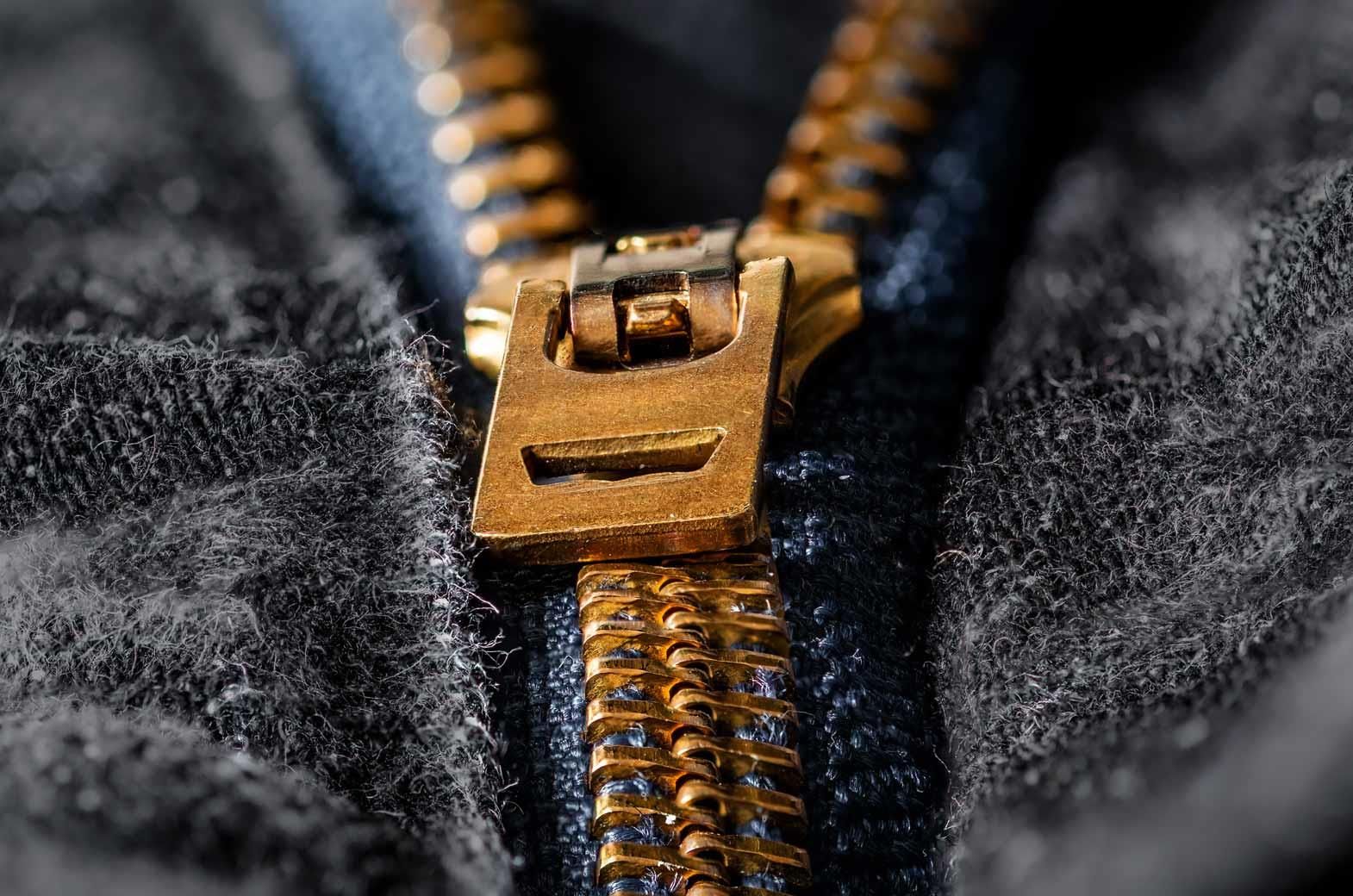Advancements in the clothing industry, use of new materials and techniques, changes in the washing process for clothing items and post-treatment of ready-to-wear garments largely contribute towards discolouration of the metal zipper, whose slider and teeth often get discoloured. Fabrics' dye transfer on to the metal zippers during the post-treatment process of clothing items can also result in the discolouration.
Discolouration: Causes and precautions
Metal
Copper alloy reacts with chemicals like alkali, acid, oxidising and reducing agents and sulfide, resulting in discolouration. Besides this, chemical reactions can also be carried out between fabric's residues during the washing process and various components of the metal zipper thus discolouring it.
High temperatures and damp environment accelerate these chemical reactions and storing the clothing items in plastic bags immediately after sewing, washing or ironing them can also result in a zipper losing its colour. Fabrics featuring reactive dyes are also most likely to undergo chemical reactions with the copper alloy.
Wool and cotton products
Zipper containing copper alloy can undergo discolouration when attached to a bleached wool fabric. Wool is usually bleached using oxidative bleaching agents like hydrogen peroxide, reductive bleaching agents like dithionite or by application of chlorine treatment to shrinkproof processing of finished products.
The chemicals that are not fully cleansed or neutralized in the bleaching process react with zippers in the damp environment to cause discolouration of various components of the accessory including its slider, teeth, and top and bottom stops, which contain copper alloy, if the clothing items are packed in plastic bags immediately after they are ironed.
Precautionary measures
-
Use clean and dried fabrics
-
Cleanse and neutralise chemicals involved in the washing process
-
Avoid packing clothing items immediately after ironing them
Leather products
Tanning agents and acids such as sulphuric acid, tannic acid, aldehyde compound and more are used in the process of tanning leather. Additionally, leather's animal proteins discharge liquids that are difficult to be disposed and causes discolouration on coming in contact with metal zippers.
Precautionary measures
Cleanse and neutralise leather after the tanning process
Store clothing items in dry and well-ventilated environments
Sulfide
Sulphur dyes that can be dissolved in sodium sulfide, are mainly used in dyeing cotton fibres and blended textiles. The main sulphur dye called sulphur black reacts with copper alloy of zipper teeth in damp environments or high temperatures and discolours them.
Precautionary measures
-
Keep a check on testing time, temperature, chemical agent dosage and PH value
-
Cleanse and dry the clothing item immediately after treating it
Reactive dyes
Reactive dyes consisting metal ions, used to dye cotton and hemp products, undergo reduction reaction with the copper alloy of the zipper. This reaction causes discolouration of fabrics as well as of the zipper.
Precautionary measures
-
Cleanse and dry clothing items immediately after treating them
-
Use a strip of cloth to prevent the fabric from coming in contact with the zipper
Industrial cleaning pen
The industrial cleaning pen, used to get rid of oil stains while sewing, has strong acidity. On coming in contact with metal zippers containing copper alloy, this pen causes the zipper to corrode and lose its colour.
Dyeing or bleaching ready-to-wear clothing items
Chemicals involved in the process of dyeing or bleaching clothing items may result in the corrosion of the metal parts of the zipper as well as the discolouration of both the zipper and the fabric.
Precautionary measures
-
Keep temperatures below 60o C
-
Carry out sample dyeing before dyeing ready-to-wear items
-
Cleanse and dry clothing items immediately after they are dyed








Comments